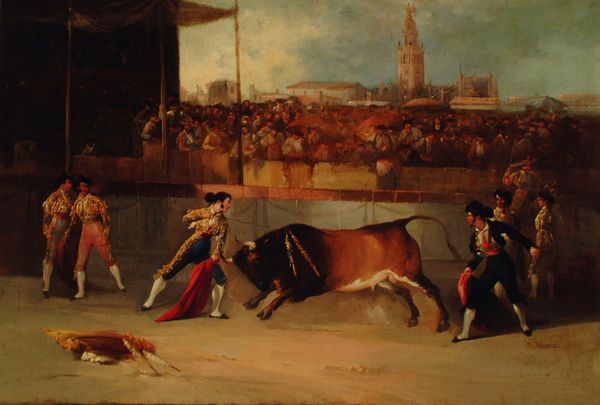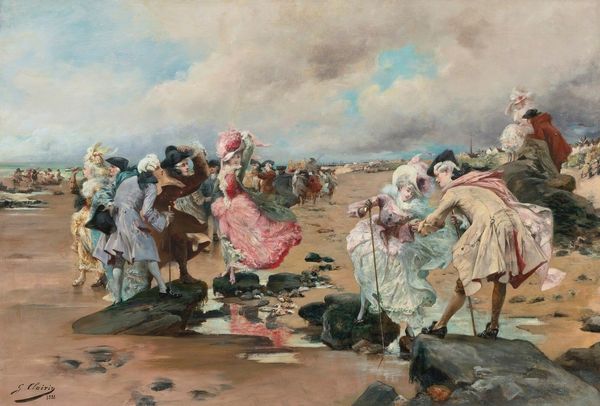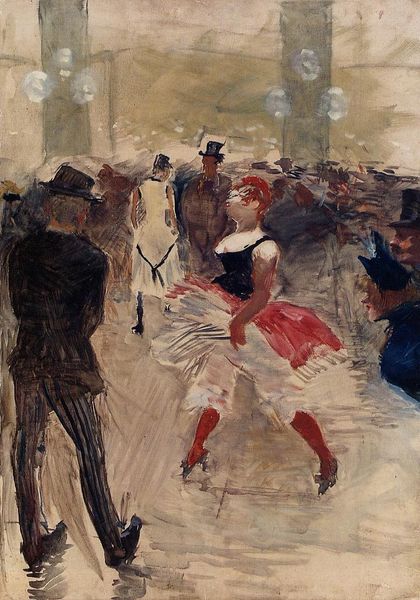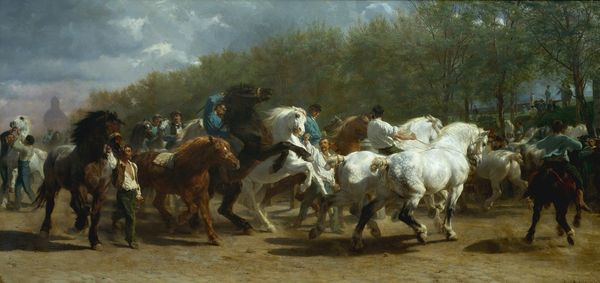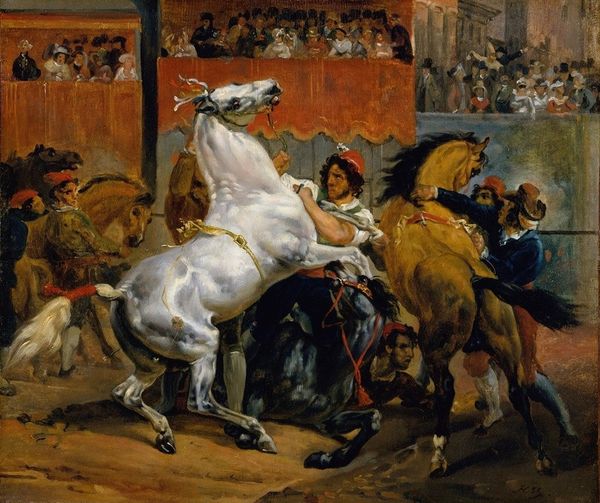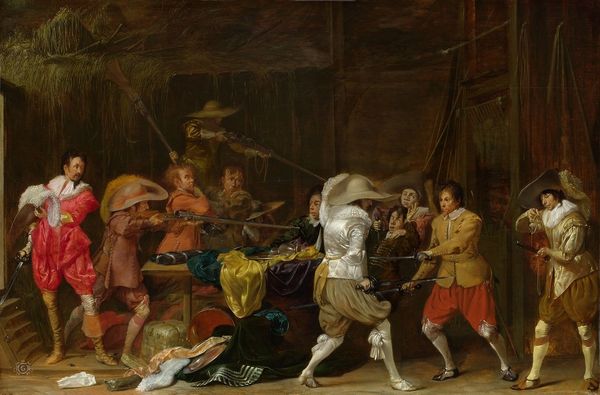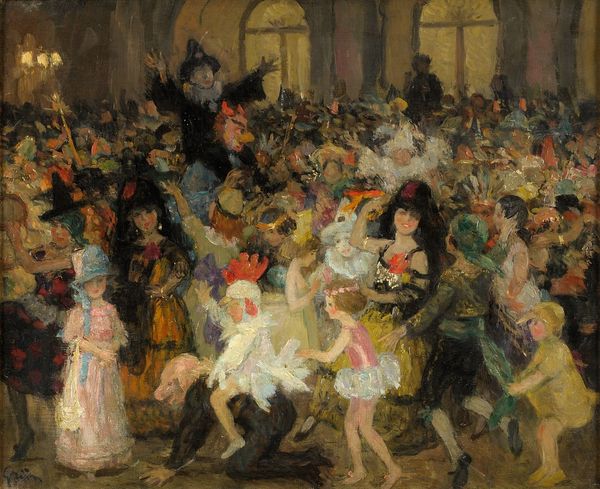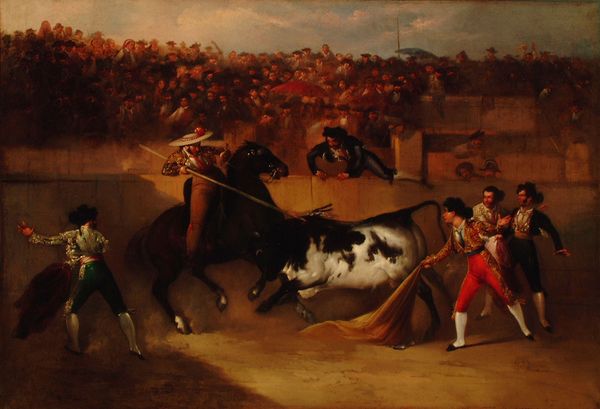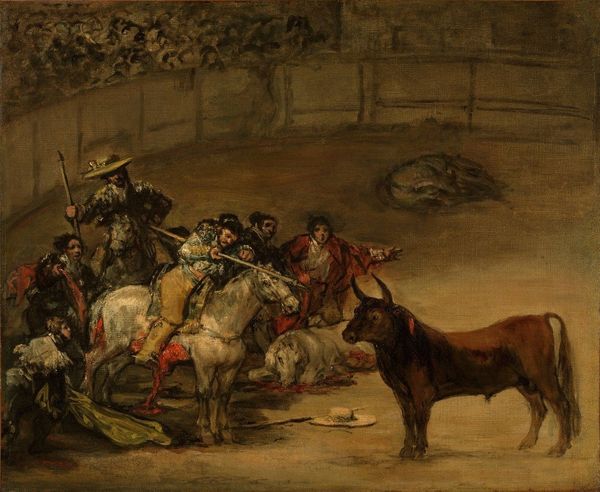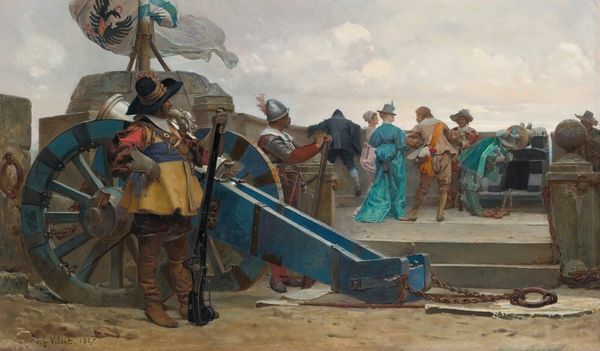
Copyright: Public Domain: Artvee
Frederick Arthur Bridgman’s “Un Cirque En Province” is an oil on canvas painting, a medium deeply intertwined with the traditions of fine art. But consider what’s depicted: not a grand historical subject or a portrait of the elite, but a traveling circus. Note the big tent, the horses in mid-gallop, the acrobats in their precarious balance, and the clowns with their exaggerated gestures. The quick brushstrokes suggest immediacy, as if Bridgman set up his easel ringside to capture the spectacle. The circus itself was a product of the industrial age, bringing entertainment to the masses. Think about the labor involved: the performers honing their skills through endless practice, the stagehands erecting the tent, and the crowds paying for a brief escape from their daily grind. The very act of painting this scene elevates the everyday, blurring the line between high art and popular culture. This is not just a painting, it’s a material document of a specific time, and the relationship between labor, leisure, and representation.
Comments
No comments
Be the first to comment and join the conversation on the ultimate creative platform.
